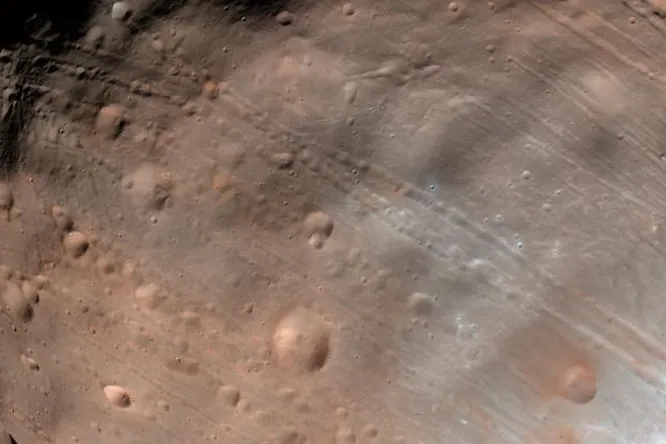
Riddle of the stripes on the satellite of Mars solved, and this satellite is waiting for an unenviable fate…
(ORDO NEWS) — Having unraveled the mystery of the “tiger stripes” on Mars’ moon Phobos, scientists were horrified by what fate awaits him in the near, by cosmic standards, future.
Gravitational interactions between Mars and Phobos could cause these celestial bodies to collide in 100 million years, according to a new study.
And, perhaps, their rapprochement has already begun.
At least some of the mysterious parallel shallow grooves that cover the entire surface of Phobos may be the result of destruction as its orbit slowly decreases and tidal forces bring it ever closer to Mars.
When Phobos will collide with Mars
Phobos makes an orbit around Mars in just 7 hours 39 minutes - this satellite is quite close to the Red Planet, and approaches it at a speed of about 1.8 centimeters per year.
With such close proximity, it is absolutely possible that tidal forces could cause the surface on its 27 kilometers wide body to collapse.
The idea that the Phobos stripes are the result of such an interaction has also been previously considered and found to be plausible.
However, it is not clear whether the current configuration and interaction of Phobos and Mars could cause the resulting bands to be observable, but no other plausible explanation has yet been found.
For example, a 2018 study suggested that the stripes could be the result of rolling boulders, but this hypothesis is unlikely to be realistic.
The authors of the new work carried out 3D mathematical modeling, which studied in detail the tidal expansion and compression of a layered body like Phobos, with a loose rubble surface.
The researchers ran hundreds of simulations using their model. In a significant number of these simulations, tidal forces caused the cohesive layer to crack and form parallel grooves, causing the top loose regolith to flow into the cracks below.
The result is a striated, striated surface, very similar to the regions seen on Phobos.
The team found that not all regions of Phobos matched the model. In particular, the grooves around the Moon’s equator did not match the predictions.
But the results show that at least some of the bands could be caused by tidal disruption from the moon’s spiraling motion.
This would mean that we see the beginning of the end for Phobos, as it will eventually have to collide with the surface of Mars.
—
Online:
Contact us: [email protected]
Our Standards, Terms of Use: Standard Terms And Conditions.


